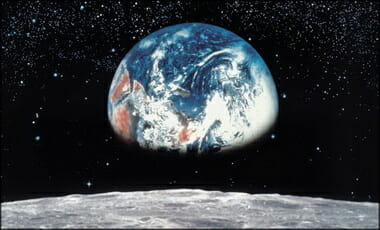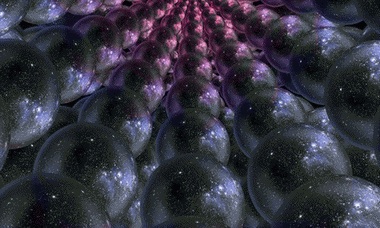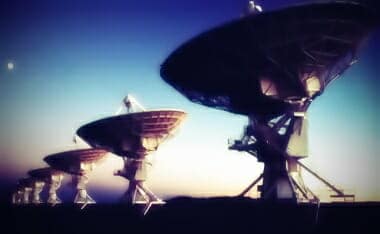This should be a part of other p[osts to understand the immense gap people what is probable and what is possible:
Thanks to the Moon’s extremely large mass relative to its host planet and to its close orbit, Earth alone among all the Sun’s rocky planets possesses a stable rotation axis tilt. The angle, stability, and longevity of Earth’s rotation axis tilt are among several fine-tuned lunar features making advanced life possible on Earth. These findings led geophysicist David Waltham to consider the Moon as a tool for testing the power and scope of the anthropic principle—the tenet that the universe and its various components manifest fine-tuned characteristics that make possible the existence of human beings. If the anthropic principle is a valid description of physical reality, Waltham reasoned, then scientists should discover additional lunar characteristics that prove beneficial to humanity’s existence.
Waltham’s investigation revealed that the Moon is nearly twice as massive as is necessary to stabilize Earth’s rotation axis. The Moon, in fact, proves almost too massive. Increase it by a mere 2 percent and the Moon would pull Earth’s rotational tilt out of stability. Waltham wondered whether some anthropic reason might be found for this excessive-to-the-point-of-risky lunar mass.
Soon he recognized that the Moon’s mass creates the tidal friction that gradually puts the brakes on Earth’s rotation rate. A Moon less massive would take longer than 4.5 billion years to slow Earth’s rotation rate from just a few hours to 24 hours per day. To extend this slowing effect over more than 4.5 billion years would mean exposing Earth to a brighter, less stable Sun—one too luminous and too unstable for advanced life. A more rapid rotation rate during the current era of solar burning would also prove problematic. More rapid rotation means a higher surface temperature…, greater temperature extremes over the planetary surface, and less evenly distributed rainfall.
~ Hugh Ross, “Improbable Planet: How Earth Became Humanity’s Home“
- RNA/DNA = Information | Or, What “Is” Information?
- Scientific and Anecdotal Evidence for the Beginning of the Universe
- The Two Books of Faith – Nature and Revelatory
To compliment the above, here is a portion of the above discussion via I.D.E.A. CENTER:
…More than Just a First Cause
The Greeks attributed the origin of the universe to a “Prime Mover”, or “First Cause” who set things in motion. “Rational thinkers” of the enlightenment took this idea further and found it popular for them to believe in a watchmaker God, who “wound up” the universe and left it to run on its own. This deistic view of the world saw God as an absentee father, who got things going, and then went on about his more important business. Big Bang theory says that the universe exploded, and over billions of years it cooled, and matter condensed forming galaxies, nubulae, stars, and solar systems. Our solar system is thought to be a “third-generation” solar system, which contains the left over parts of two previous star systems which “went nova.” The formation of the solar system, and the earth, allegedly occurred long after the beginning of the universe. Thus, while God could have initially set physical properties of the universe and then gone fishing, the presence of similar “anthropic principles” for the solar system, the moon, and the earth itself indicate that the Designer was involved long after the beginning of the universe and had something to do with life on earth. Put in simple theological terms, one might say, God cares about life on earth.
First of all, the very position of the solar system in our galaxy is unique among stars, and allows for the existence of life. Astronomers Hugh Ross and Guillermo Gonzalez explain:
“The solar system occupies a position in the disk of the Milky Way approximately halfway to its edge and in-between two spiral arms. We now know enough about the structure of our galaxy to understand why our location should be preferred over others. If our solar system were closer to the center of the Milky Way or closer to one of its spiral arms, we would encounter harmful radiation from supernovae and perturbations from stars that would send Oort cloud comets careening into the inner solar system. If the solar system had formed farther out in the disk of the Milky Way, there would not have been sufficient heavy elements to build a planet capable of supporting life.”
Not only is the position of our solar system important, but also the fact that our solar system’s relative position remains constant within the galaxy. Richard Deem notes that, “the stability of our position is possible because the sun is one of the rare stars that lies within the ‘galactic co-rotation radius'” where, “most stars located between spiral arms do not remain there [within a galactic co-rotation radius] for long, but would eventually be swept inside a spiral arm [of the galaxy]. Only at a certain precise distance from the galaxy’s center, the “co-rotation radius,” can a star remain in its place between two spiral arms, orbiting at precisely the same rate as the galaxy arms rotate around the core”. But having a sun–or even a typical sun–isn’t enough:
“While most textbooks discuss the Sun as if it were a typical star, it is a more massive star than 90 percent of the stars in the Milky Way. The Sun is anomalous in other ways, including its composition, brightness variation, and Galactic orbit. It can be plausibly argued that each of these characteristics must be exactly as it is for advanced life to exist on Earth.”
As discussed above, liquid water is necessary at least for carbon based life23, and probably for any life. Yet another parameter allowing for life on Earth is its position within the solar system which allows for liquid water. Nick Hoffman, Senior Research Scientist at La Trobe University, Melbourne Australia notes that if Earth was a bit closer to the sun, it would have a runaway greenhouse atmosphere vaporizing any chance for non-gaseous water to exist, like Venus. But, if it were a little further, it would have had no liquid water, as it all would have been frozen.
Earth’s single large satellite, the Moon, is unique among the planets and greatly affects the geography of the earth. Hoffman again notes that, “it has become clear that our Moon is a rare celestial object and that few Earth-like planets could have produced such a chance outcome during their assembly” and argues that without the moon, the earth most likely would have little to no exposure of continents.
Similarly, Ross and Gonzalez note that the moon is vital for earth’s continental geography:
“Removing the moon seems harmless enough at first. Of course, Solon [Earth without the moon] would differ from the earth. The tides would be lower without the moon, and it would lack eclipses and romantic, moonlit nights, but in the global scheme of things these changes seem trivial. As we dig deeper, we discover that lower tides, higher winds, and shorter days would greatly affect Solon’s geography, its ability to evolve [could also read: support] life, and the quality of the life animals would have there. As the differences between Earth and Solon become more evident, it becomes clear that Solon would be a much less hospitable place in which to live.”
Finally, it has been argued that the size of the earth has prevented it from becoming either a total desert or a waterworld, that the large magnetic field protects life from harmful radiation, that our unique continental crust allows for plate tectonics and replenishes nutrient supplies for life, and even that the size and position of Jupiter is vital to the protection of life on earth from space debris. The bottom line is that a large number of parameters of the earth and solar system are finely-tuned to keep it a stable, protected, nutrient and liquid-water bearing planet. This implies that design went into the origins of earth and the solar system, disallowing for a deistic worldview where God does not care about life on this planet.
Winning the Cosmic Lottery
In light of this evidence for fine tuning, what are our options? So potent is the argument for design that one commentator stated that, “[t]his fine-tuning has two possible explanations. Either the Universe was designed specifically for us by a creator or there is a multitude of universes- a `multiverse’” This common objection to these arguments basically goes like this:
“Sure, maybe it is unlikely that our universe would be ‘just right’ for life. But isn’t it also really unlikely that one would win the lottery? We don’t infer some divine coincidence there because we know that if you have enough tries, chances are even something very unlikely will occur. If there are ‘infinite universes’ out there, then perhaps the fact that ours is ‘just right’ for life isn’t so unlikely!”
While this objection, if valid, would seem to make our universe less likely, the rejoinder to that is that we have no evidence of these “multiple universes” and this is complete philosophical speculation. This argument is unverifiable, and unfalsifiable. Additionally, Paul Davies notes that, “if the bio-friendliness of the natural world were the result of randomness, we might expect the observed universe to be minimally rather than optimally bio-friendly. But the degree of bio-friendliness we observe in the universe is far in excess of what is needed to give rise to a few observers to act as cosmic selectors.” Occam’s Razor (the claim that simpler explanations tend to be the right ones) would seem to argue against postulating some complex cosmic lottery producing infinite universes.
However, the anthropic argument for design has something else much more powerful going for it. According to intelligent design theory, the ways that intelligent agents act can be observed in the natural world and described. When intelligent agents act, it is observed that they produce high levels of “complex-specified information” (CSI). CSI is basically a scenario which is unlikely to happen (making it complex), and conforms to a pattern (making it specified). Language and machines are good examples of things with much CSI. From our understanding of the world, high levels of CSI are always the product of intelligent design. It may very well be that, through the fine-tuning of its laws, the universe contains this same CSI that we tend to find produced through intelligent design. The laws and properties of the universe are extremely complex, yet they are highly specified to match the very properties needed for life. Thus, we have a positive argument in favor of intelligent design of the universe. In essence, the universe has the same type of information we tend to find in intelligently designed machines. This strongly points to design….



